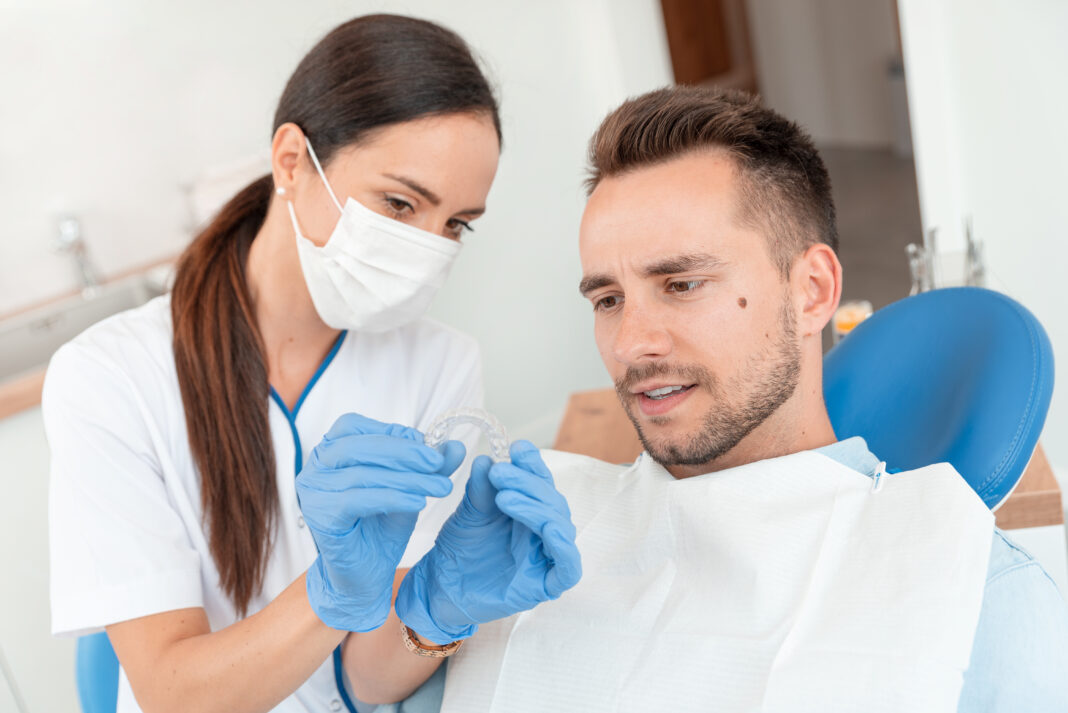Crooked or misaligned teeth can put a damper on your confidence. Fortunately, modern orthodontics can help you straighten your teeth, allowing you to have a bright smile, all while benefiting your overall dental and oral health.
Although traditional metal braces are still common today, new technology and innovations have allowed orthodontics to come up with other ways to fix crooked teeth, one of which being Invisalign braces.
In this article, you’ll learn more about the basics of Invisalign braces, as well as their costs, Plus, you’ll be able to determine if you’re a good candidate for this teeth straightening procedure.
Invisalign: What Is It And How Much Does It Cost?
Invisalign is actually a brand name for a thin clear aligner used for teeth straightening treatments. This clear aligner is made of flexible thermoplastic material and is designed to make orthodontic treatment less noticeable or conspicuous. Thus, it’s also often called invisible braces.
Take note that Invisalign aligners aren’t completely invisible. However, since these clear coverings fit snugly over your teeth, they’re much less obvious than traditional metal braces.
In terms of cost, Invisalign may be comparable or cost more than traditional braces, although this will depend on several factors, including location, treatment duration, type of teeth correction needed, and patient age.
4 Indications Invisalign Is Right For You

- You Have Mild To Moderate Crooked Or Misaligned Teeth
In general, Invisalign braces are suitable for most cases of crooked or misaligned teeth, including:
- Overbite
Also known as buck teeth, an overbite means that your front upper teeth protrude out over your lower teeth. The late rock icon Freddie Mercury is one of the most popular cases of having an overbite.
- Underbite
An underbite is the opposite of an overbite. In this case, the lower front teeth protrude out over your upper teeth, creating a bulldog-like appearance.
- Crossbite
A crossbite is similar to an underbite. The only difference is that crossbite only impacts a group of teeth, instead of affecting them all. as with an underbite. With a crossbite, your teeth don’t fit over each other when the mouth is closed.
- Open bite
An open bite refers to a condition when both the lower and upper front teeth slant outward so they don’t touch when the mouth is closed.
- Crowded teeth
Also known as overlapping teeth, dental crowding occurs when there’s not enough space in your mouth for permanent teeth to grow straight, causing crooked or misaligned teeth that overlap one another.
- Gapped teeth
Diastema, also known as spaces or gaps between the teeth, can form anywhere in the mouth. Some gaps may be small and barely noticeable, while others are larger and can be a cosmetic problem.
Your orthodontist should be able to assess your case and help you determine if Invisalign is suitable for your specific dental issue. Take note that for complex or severely crooked teeth, traditional braces may be a suitable option.
- You Want It To Be Discreet
If you don’t like the look of metal and colorful litigation rubbers in your mouth, then Invisalign is a good choice to help straighten your teeth. As mentioned before, Invisalign is clear trays that are barely noticeable even when talking and socializing.
This is particularly beneficial for working adults who deal with several people throughout their day or if their work doesn’t allow traditional braces. For instance, in some countries, flight attendants and cabin crews may be asked to remove their braces should they be shortlisted for assessment and final interview.
- You’re Disciplined
Using Invisalign braces is pretty straightforward. That said, it requires commitment and discipline. Unlike traditional braces, Invisalign is removable, so you can take it out if you wish. This means that the system and its effectiveness rely on you wearing it on your teeth for a specific number of hours a day. Depending on your case, your orthodontist may require you to wear the braces all the time and only remove them when you eat.
Unfortunately, since they’re removable, some people may decide not to wear them or just forget to wear them for the day. Some may even lose them. These types of people won’t get good results with Invisalign.
Although the average treatment duration isn’t longer than a year, you still need to consider if you can handle the commitment required.
- You Have All Your Adult Teeth
In general, orthodontists won’t treat crooked teeth unless all your adult teeth are out. This is because they can’t predict how adult teeth will grow in. In some cases, a patient may still have a baby tooth or two in their mouth. In this case, an orthodontist may require further work before you can start with the Invisalign process.
Takeaway
Although there are several options to straighten your teeth, Invisalign braces are the only clear option that’s free of obtrusive wires and brackets. And, contrary to some beliefs, Invisalign is actually suitable for most people. If several indications from the above list fit you, then Invisalign can be a great choice to fix alignment issues and get that beautiful smile you deserve.
